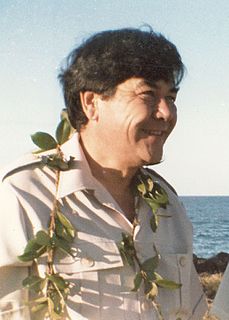Top 2 Quotes & Sayings by Herb Kawainui Kane

Herbert Kawainui Kāne, considered one of the principal figures in the renaissance of Hawaiian culture in the 1970s, was a celebrated artist-historian and author with a special interest in the seafaring traditions of the ancestral peoples of Hawaiʻi. Kāne played a key role in demonstrating that Hawaiian culture arose not from some accidental seeding of Polynesia, but that Hawaiʻi was reachable by voyaging canoes from Tahiti able to make the journey and return. This offered a far more complex notion of the cultures of the Pacific Islands than had previously been accepted. Furthermore, he created vivid imagery of Hawaiian culture prior to contact with Europeans, and especially the period of early European influence, that sparked appreciation of a nearly forgotten traditional life. He painted dramatic views of war, exemplified by The Battle at Nuʻuanu Pali, the potential of conflicts between cultures such as in Cook Entering Kealakekua Bay, where British ships are dwarfed and surrounded by Hawaiian canoes, as well as bucolic quotidian scenes and lush images of a robust ceremonial and spiritual life, that helped arouse a latent pride among Hawaiians during a time of general cultural awakening.
Related Authors































